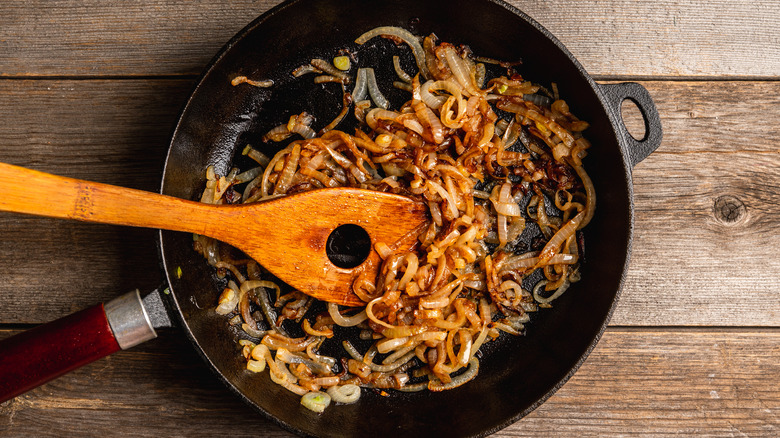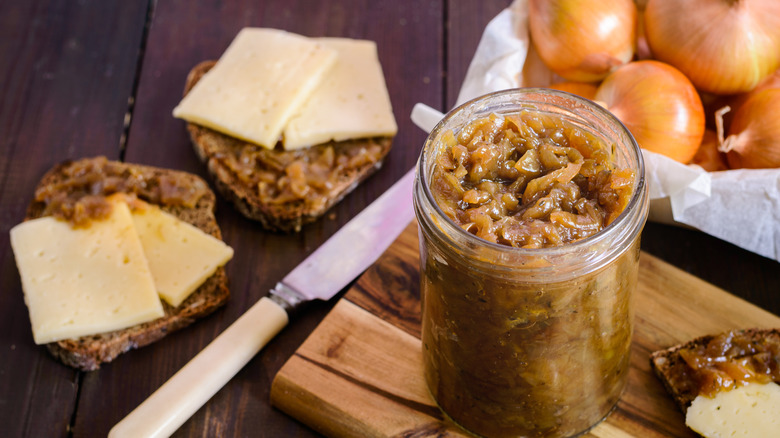Why The Pros Add Water When Caramelizing Onions
Onions are an essential component in cooking in all cuisines. In French cooking, onions, carrots, and celery are the flavor foundation for savory dishes from soups and stews to marinades and dressings called mirepoix. These aromatics in Italian cooking are chopped finer and referred to as soffrito, and Southerners replace the carrot with green peppers to make the trinity.
According to MasterClass, different cuisines will vary the fat used to sauté onions and other vegetables, with French cuisine favoring butter and Italian preferring olive oil. The sautéed veggies are cooked for about five minutes over low to moderate heat, becoming softer, fragrant, and translucent but not browned. Cooking onions draws out the sweetness of the veggie and mellows the harsh bite of raw onion. However, cooks looking for a deeper, complex flavor must go one step further.
Caramelized onions are the flavorful, complex, and jammy ingredient found in dishes like French onion soup and onion dip and top everything from hamburgers to omelets. The long, slow process breaks down the cells of the onion, drawing out its moisture and natural sugars. The sugars in the dehydrated onions are caramelized, and the proteins, thanks to the heat, undergo a chemical process known as the Maillard reaction resulting in the golden brown color associated with caramelized onions, per Onions-USA. While there's no quick method to caramelize onions, some techniques are faster and more forgiving than others.
This method cuts the cooking time in half
Most grocery stores carry a variety of onions distinguished by their color, price, and taste; red, white, yellow, and the priciest, sweet. Although onions are interchangeable in many dishes, they have different sugar and sulfur levels which affect the sweetness and strength of the onion, making some better for specific recipes. According to Onions-USA, 87% of the U.S. onion crop is yellow onions, and according to Serious Eats, yellow is the best to caramelize. The first step to caramelizing onions is to sweat them, which draws out the moisture in onions (75% water by weight) and makes them softer. Since this stage is traditionally done over low heat, the process can take 40 minutes.
To cut that time in half, Cook's Illustrated adds water to the pan of onions and increases the heat to high. Once the water boils, place a lid on the pan, allowing the trapped steam to wilt or sweat the onions without babysitting them for fear of burning. After 10 minutes, the cover is removed, and the flame is lowered to medium-high for caramelization.
Once the lid is removed and the water evaporates from the pan, the onions must be stirred frequently to brown evenly and keep the sugars from burning. Be sure to scrape the fond or burnt bits from the bottom of the pan, adding a drop of water or lowering the heat if necessary. The difference between caramelized onions and burnt onions can be one text message, so don't step away.

